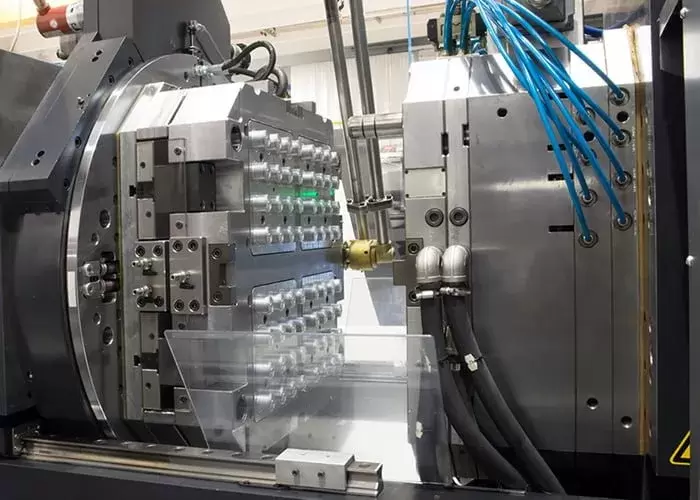Introduction
In a competitive industry like automotive manufacturing, mold flow analysis is not just an added benefit—it’s a necessity. This powerful simulation process helps manufacturers understand exactly how melted plastic flows into a mold, allowing for early design optimizations that save time, reduce waste, and ensure part quality. For companies like V1plastic, specializing in automotive injection molding solutions, mold flow analysis is at the core of designing efficient, high-performance components. In this article, we’ll explore the benefits and applications of mold flow analysis in plastic injection molding for automotive parts, with a focus on how it streamlines the design process and boosts production efficiency.

What is Mold Flow Analysis?
Mold flow analysis (MFA) is a virtual simulation used to predict the flow behavior of melted plastic within a mold cavity. This analysis gives valuable insights into potential problems, from areas prone to shrinkage and warping to zones at risk for weld lines or air traps. By providing a digital preview of how plastic will flow, MFA helps manufacturers refine their mold designs and optimize processes before production begins.
In the automotive sector, where precision is critical, even the smallest defect can lead to assembly issues or compromised safety. That’s why mold flow analysis is indispensable—it minimizes these risks by allowing designers to make data-driven decisions on materials, tooling, and process settings.
Why Mold Flow Analysis is Crucial in Automotive Injection Molding
Automotive parts face a unique set of demands: they need to withstand mechanical stress, resist temperature fluctuations, and endure chemical exposure. Mold flow analysis helps designers meet these rigorous standards by enabling them to:
- Enhance Part Quality: Optimize factors like wall thickness and structural support for better durability.
- Reduce Defects: Proactively address issues like warping, sink marks, or short shots that can compromise a part’s functionality.
- Boost Efficiency: Lower cycle times and reduce waste, translating to significant cost savings.
- Ensure Durability: Verify that parts will withstand the high-stress conditions typical in automotive applications.
Key Benefits of Mold Flow Analysis in Injection Mold Design
1. Reducing Defects and Improving Quality
One of the standout advantages of mold flow analysis is its ability to prevent defects before they occur. By simulating the mold-filling process, engineers can identify potential issues like voids, weld lines, and air traps. This is particularly valuable in the automotive industry, where quality issues can lead to recalls or costly component failures.
With V1plastic’s mold flow analysis, these risks are minimized early, ensuring every part meets stringent quality requirements.
2. Achieving Cost Savings with Optimized Design
Mold flow analysis also offers major cost benefits. By understanding how materials flow and behave in a mold, designers can reduce material usage and optimize cycle times. For instance, MFA can reveal if adjustments to gate locations or wall thickness will lower material requirements, resulting in both direct and indirect savings.
3. Speeding Up Time-to-Market
In automotive manufacturing, delays can be costly. Mold flow analysis accelerates the design phase, as engineers can test multiple iterations virtually. This enables adjustments to be made before tooling is finalized, avoiding costly post-production changes and ensuring that products reach the market sooner. With mold flow analysis, V1plastic helps clients benefit from reduced lead times, allowing for faster project completion.
4. Ensuring Part Durability and Performance
Automotive parts need to perform under demanding conditions, including exposure to extreme temperatures, mechanical stress, and chemicals. Mold flow analysis provides a glimpse into how parts will fare in real-world conditions, allowing manufacturers to enhance durability. By simulating factors like cooling rates and pressure distribution, V1plastic ensures that each part meets the highest durability standards.
Steps in Mold Flow Analysis for Automotive Applications
- Defining Material Properties
Engineers start by selecting materials based on specific requirements, such as strength, flexibility, and resistance to environmental factors. Mold flow analysis relies on these properties to predict material behavior accurately. - Creating a 3D Model
A detailed 3D CAD model is created for the part and mold. This model incorporates essential geometric details, including gate positions, wall thickness, and core inserts, all of which impact the material flow. - Setting Up Simulation Parameters
Key parameters such as injection speed, pressure, and cooling time are set in the software. These factors influence the final product’s quality, so they’re tailored to achieve the desired outcome. - Running the Simulation
Once everything is set, the software runs a virtual injection process, generating data on flow patterns, potential weak points, and areas of high pressure or cooling variation. - Analyzing and Refining the Design
Engineers review the simulation results, adjusting the mold design as needed. This iterative process continues until the design meets all quality and performance standards.
Real-World Example: Mold Flow Analysis for Automotive Interior Parts
Consider an example: designing an automotive dashboard panel. This component requires precise dimensions and a smooth surface to meet both functional and aesthetic standards. By applying mold flow analysis, V1plastic can:
- Ensure Uniform Material Flow: Avoiding short shots or thickness inconsistencies.
- Minimize Weld Lines: Enhancing both the appearance and structural integrity of the panel.
- Optimize Cooling Time: Reducing cycle time while maintaining dimensional stability.
Through mold flow analysis, V1plastic helps clients produce dashboard panels that meet stringent automotive requirements, ensuring both quality and cost-effectiveness.

Common Challenges in Mold Flow Analysis and How to Overcome Them
While mold flow analysis is an invaluable tool, it comes with its challenges, especially for complex automotive components.
- Accurate Material Data
Challenge: Inaccurate material data can affect simulation results, leading to errors in the final product.
Solution: V1plastic collaborates closely with material suppliers to obtain reliable data, ensuring simulation accuracy. - Complex Geometries
Challenge: Automotive components often have intricate designs that can be difficult to simulate accurately.
Solution: Advanced software and experienced engineers help simplify and analyze complex designs, reducing the risk of defects. - Simulation Time Constraints
Challenge: Detailed simulations, particularly for complex parts, can be time-intensive.
Solution: V1plastic optimizes initial designs and uses high-performance computing to reduce simulation time while maintaining precision.
Why Choose V1plastic for Automotive Injection Molding?
When it comes to automotive injection molding, V1plastic’s expertise and dedication to quality make it a top choice. With deep industry experience and specialized skills, V1plastic provides:
- Custom Solutions: Tailored services that meet the specific requirements of high-performance automotive parts.
- Quality Assurance: Comprehensive quality control protocols that ensure all parts adhere to rigorous automotive standards.
- Expertise in Automotive Applications: V1plastic’s extensive experience in the field means clients can trust them to deliver durable, high-quality parts.
How Mold Flow Analysis Influences Injection Molding Machine Selection
The insights gained from mold flow analysis often influence the choice of injection molding machines for production. For example:
- Optimized Cycle Times: If the analysis shows prolonged cooling times, a machine with enhanced cooling capabilities may be chosen.
- Pressure Requirements: For parts needing high injection pressure, V1plastic selects machines that ensure consistent pressure control.
- Energy Efficiency: By highlighting unnecessary material usage or excessive cycle times, mold flow analysis guides the selection of energy-efficient machines, helping reduce costs.
Summary
Mold flow analysis has transformed plastic injection mold design, especially for automotive parts that demand high standards of accuracy and durability. By simulating plastic flow within the mold, V1plastic offers automotive manufacturers optimized designs that meet industry requirements, minimize defects, and shorten production times. From improving quality and reducing costs to enhancing part durability, mold flow analysis is an essential tool for developing reliable, high-quality automotive parts.
